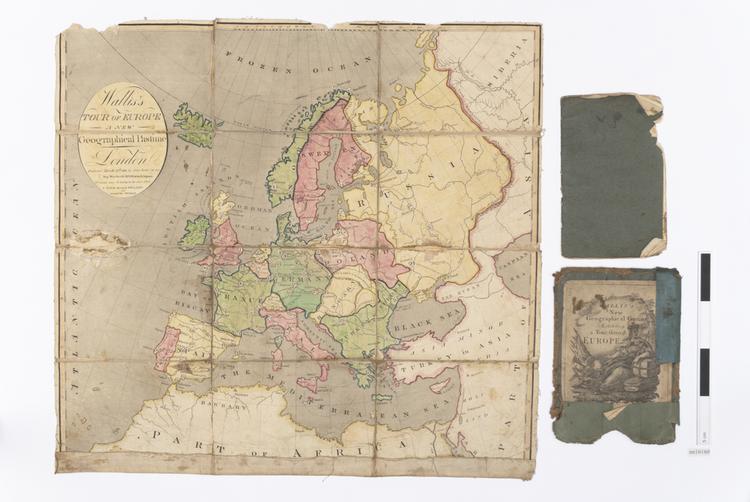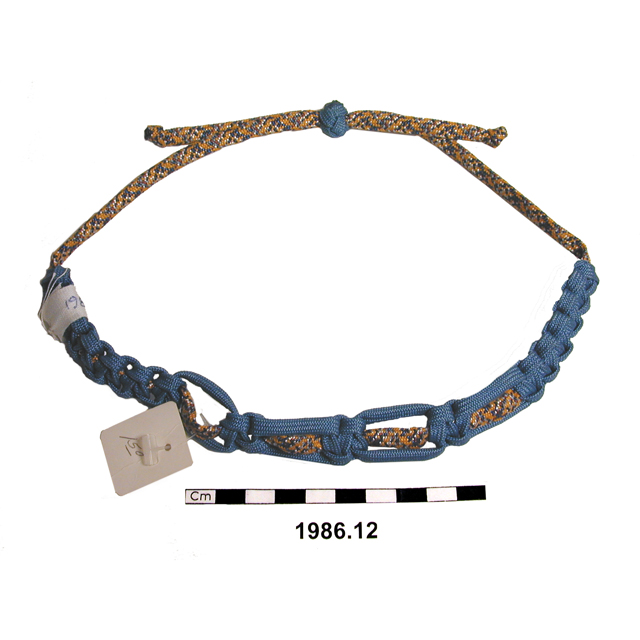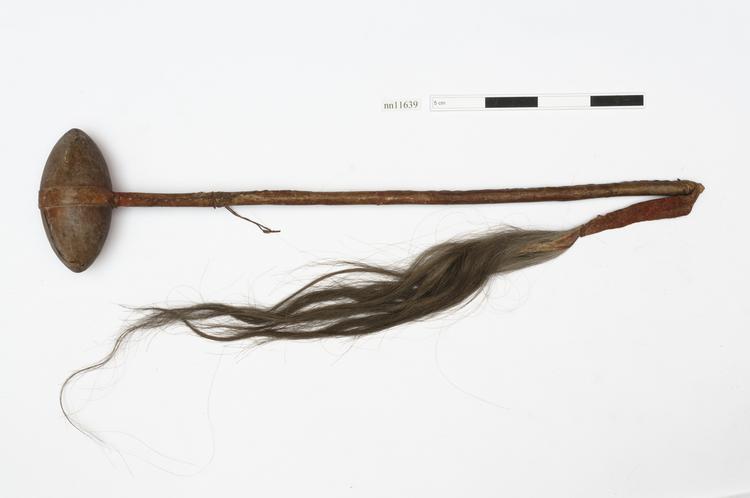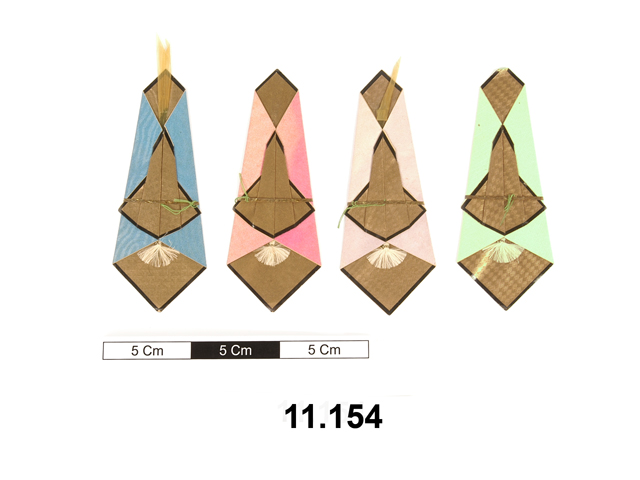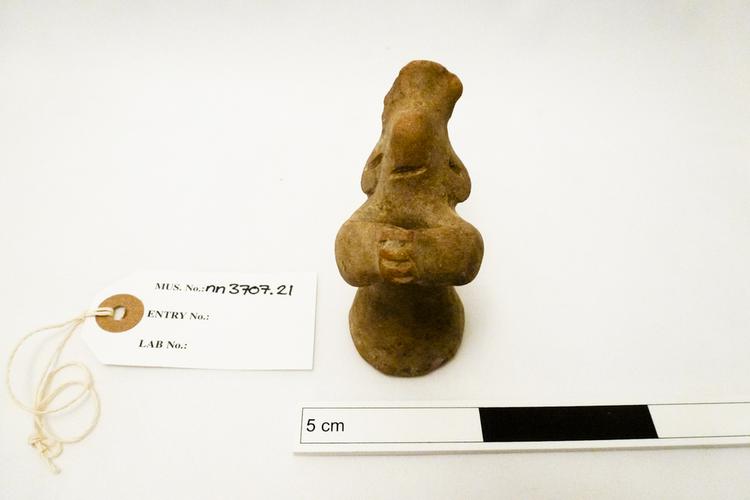

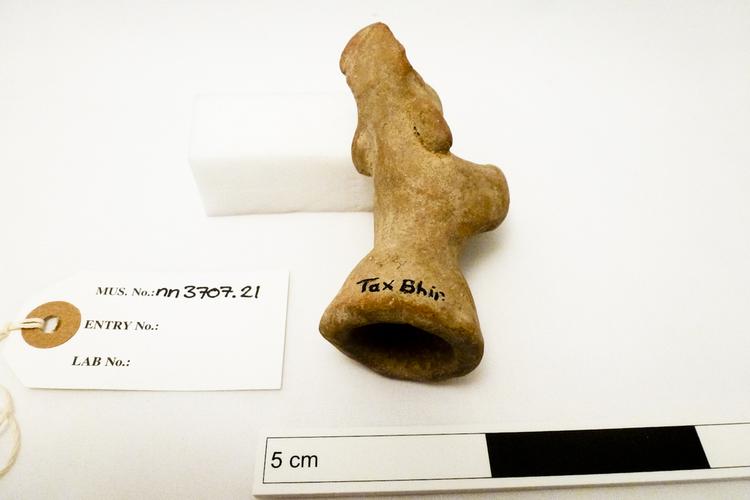
Figurine in light red terracotta with traces of a darker red slip, depicting a standing human figure with clasped hands raised in Añjali Mudrā, a gesture of reverence or worship, the back arched backwards as in a mode of supplication. The eyeless face has a slit mouth, large drooping ears nearly pierced through, as if the lobes had been pierced and were dangling from the weight of heavy ornaments, as in many Buddha/bodhisattva images. The top of the head is expanded vertically into a fan-like projection of unknown specific character, perhaps part of a turban or other headgear, but common in this sort of figurine, which is one of the best known terracottas of the period. The base of the figure, which is footless, consists of a circular hollow stand. This object must be intended to be an image of a worshipper of some kind and it can easily be imagined used singly or with others to honour a religious image of some sort or for some other votive purpose.
A figurine in light red terracotta with traces of a darker red slip, depicting a standing human figure with clasped hands raised in Añjali Mudrā (a gesture of reverence or worship), the back arched backwards as in a mode of supplication. The eyeless face has a slit mouth, large drooping ears nearly pierced through (as if the lobes had been pierced and were dangling from the weight of heavy ornaments, as in many Buddha/bodhisattva images). The top of the head is expanded vertically into a fan-like projection of unknown specific character (part of a turban or other headgear?), but common in this sort of figurine, which is one of the best known terracottas of the period. The base of the figure (which is footless) consists of a circular hollow stand. This object must be intended to be an image of a worshipper of some kind and it can easily be imagined used singly or with others to honour a religious image of some sort or for some other votive purpose. It would be worth consulting Marshall (2001) for further views on this sort of object. The figure is marked on the back with ‘Tax Bhir’, that is to say it comes from the Bhir Mound at the great ancient city complex at Taxila, near Islamabad in northern Pakistan. This is the only terracotta object from Taxila in the Gordon collection at the Horniman for which a precise location has been noted. It is further labelled with the number ‘24’, in pencil. Archaeological context: presumably unstratified and from a surface collection. The Bhir Mound dates at its lowest levels to about the 6th century BCE and extends in occupation to post-Mauryan times (ie, beyond the 3rd century BCE). This object is not likely to be later than about that date, though anything found on the surface of any ancient site need not be associated with it and could be later in date. Given by Col. D H Gordon (1952/3).



